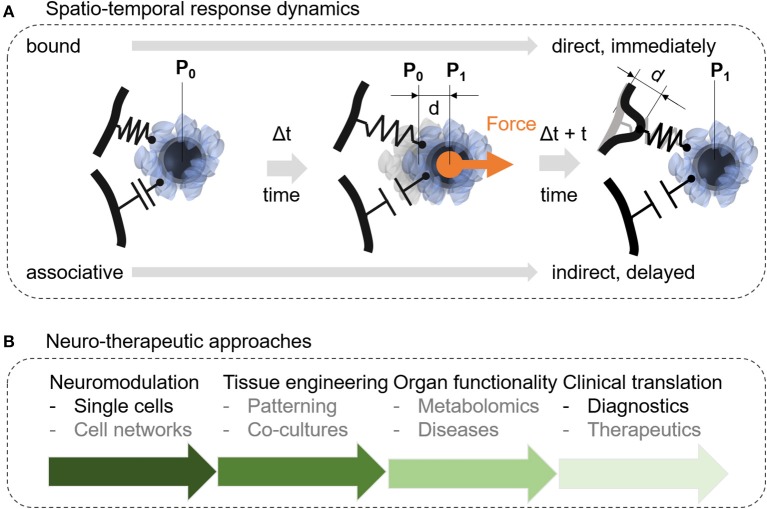Figure 7.
Suggested future studies should address fundamental aspects of how nanomagnetic forces associate with cellular structures or how nanomagnetic force stimulation can be integrated into therapeutic and translational approaches. (A) Protein-protein interactions are suggested to play a dominant role in nanomagnetic force activation and may determine how much force is required and how sensitive cells are to a biomechanical stimulus at the membrane. Depending on the surface functionality nanoparticles may interact with the cellular membrane in a weak associative or on a strong bound connection. The strong bound connection suggests an immediate deformation of the membrane resulting in a short lag time to trigger a specific intracellular downstream process after a stimulus occurred. In contrast to the strong connection, the weaker associative connection may lead to a longer lag time or result in no further activation of downstream processes. (B) Other research efforts should focus on integrating nanomagnetic force stimulation into current neuromodulation tools, tissue engineering, organ functionality and translation into diagnostics, patient-specific therapeutics, or treatment predictions.

